Our four nights in Chateauneuf du Pape still involved recovering from whatever bug I picked up. We were in Chateauneuf du Pape from Friday evening to Tuesday morning, and their annual big medieval festival lasted most of our stay. The day of our arrival we had pre-bought tickets to the gala dinner and medieval show waiting at the Office of Tourism.
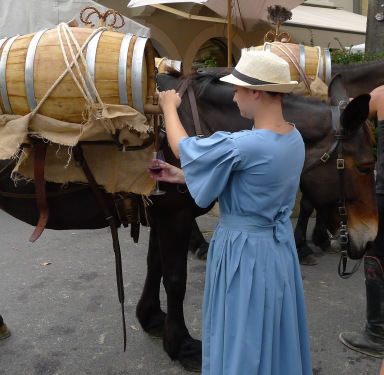
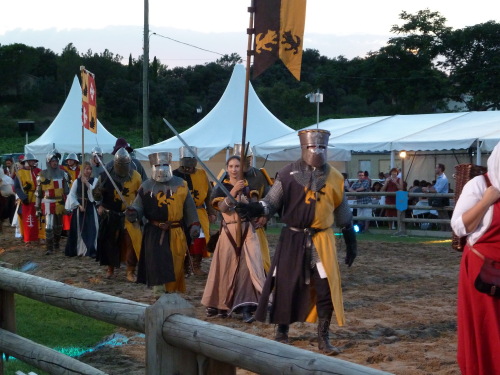
Over 1000 people were served and entertained. The meal began with a mousse-like paté, then a cold pork loaf with salad, followed by creamy white fish soup (okay so I haven’t eaten anything yet .), then some sort of meat with steamed spinach and potatoes (ate a little ). The meal finished with a cheese tray and dessert (we left before dessert it was after midnight and I was exhausted ). Various red and white wines from Chateauneuf du Pape were served non-stop throughout the evening. For those that didn’t attend the dinner, the wines were flowing at the restaurants and bars in the town, and over the weekend, on occasion, those who “over-indulged could be seen splashing in the town centre’s fountain .
While eating and in between courses, lepers wandered throughout the crowd stirring up mischief, horses performed, clans paraded and played music, a fire show with rings and ropes entertained, jousting, clan clashes, and other medieval challenges kept the audience captivated.

The Veraison Festival transforms the village of Chateauneuf du Pape , for 3 days each year on the first weekend of August, into a medieval town. Over 200 people dress in costume, performing as they wander through the town, and vendors line the streets selling foods and crafts. The other big attraction is that all the local wineries (over 350) offer wine tasting for free – all you need to do is take them your glass that you purchased anytime during the Festival for 3.5 Euros :-). Thousands of people came each day to partake in the festivities. Our B&B was located right on the edge of the town centre so we were very much in the midst of the hustle and bustle of the weekend.
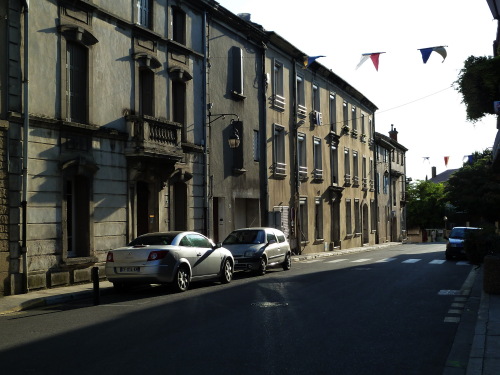
Monday morning, the town returned to its quiet splendor – all the vendor stalls were removed, traffic returned to the streets, and the crowds disappeared.
We drove to the largest remaining Roman aqueduct located in Pont du Gard. The bridge has 3 tiers of arches and is almost 49 m high. It was used to carry water to the people of Nimes on a winding route of 50 km, from 1 AD into the 6th century.
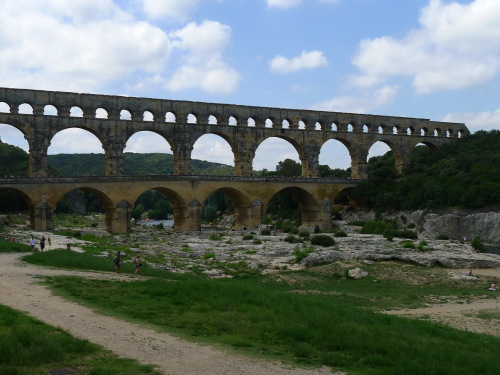
Our next 4 nights (and the beginning of my body finally returning to normal) were in Quincie-en-Beaujolais. Also – the heat wave broke (hooray). We paid to have meals served at this B&B. Although, meals were late, lasted over a couple of hours, and were 5 courses, the food was delicious – good home-cooked French food (served with unlimited wine :-).
While in the Beaujolai area, we visited Cluny Abbey. Building began in 910 and was the mother house for over 1000 monasteries until 1791.
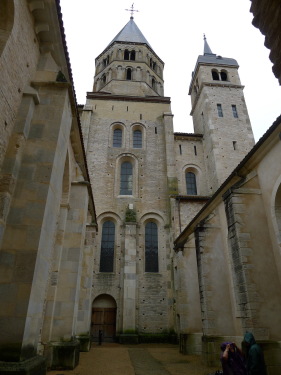
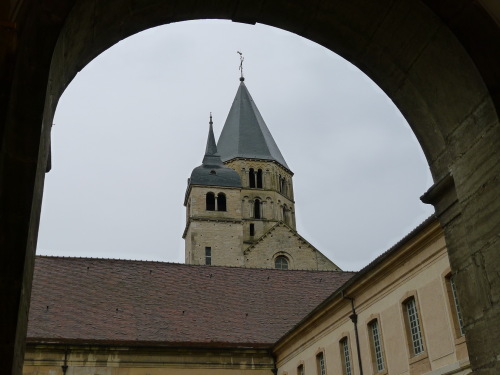
We visited, but didn’t enter the Château de Pierreclos, a medieval castle in the area. Built on a hilltop, the views are spectacular.
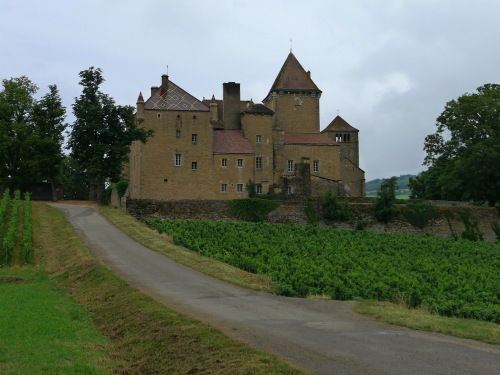
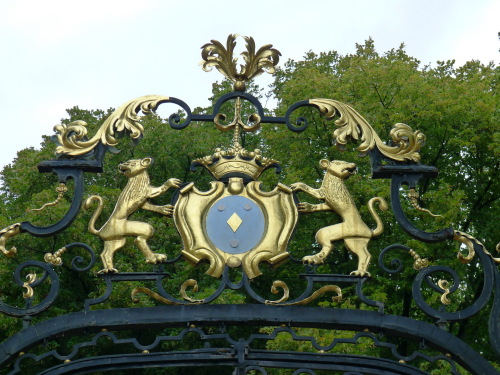
In the Pouilly-Fuisse area, we drove to Rock of Solutré, a limestone escarpment. It is considered a geographical phenomenon in this area. In the heart of this wine region, it was the site of a prehistoric culture.
1.2 KM hike to the top if you care to !
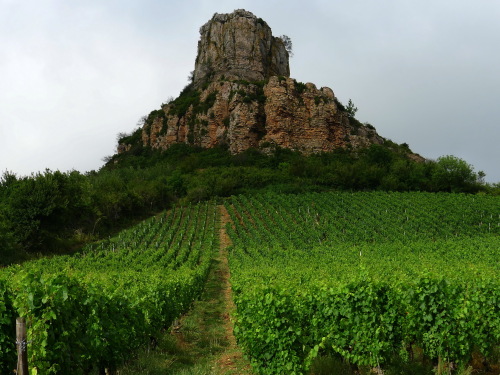
On our final day in Beaujolais, we drove to Perouges, a medieval walled town with narrow cobblestone streets. Many buildings remain from the days of medieval times. The town was once occupied mainly by linen weavers and farmers. The textile industry flourished until the 19th century when roads and railroads were re-routed. The population of Perouges all but disappeared, then in the early 1900s the town was restored and houses restored.
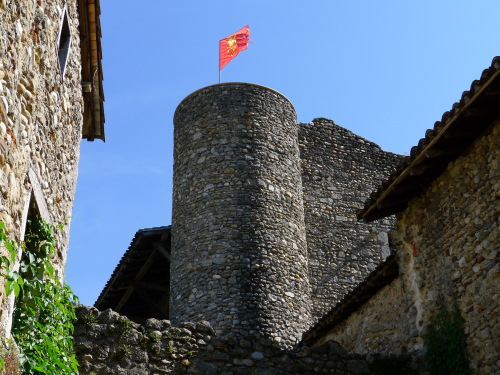
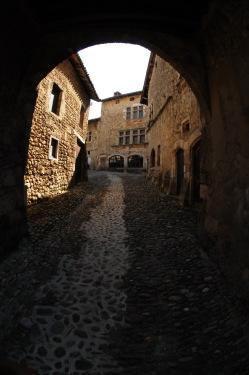
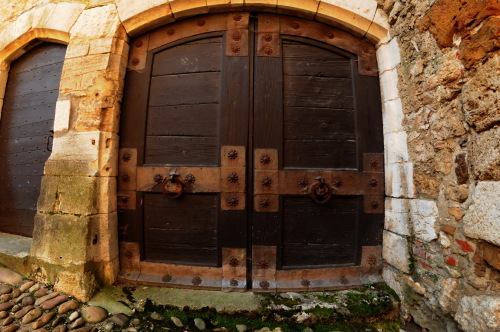
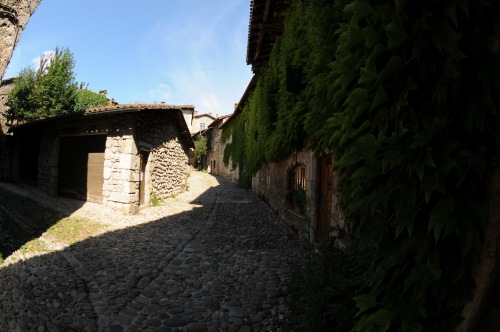
We then drove to visit the Hameau du Boeuf Wine Museum. It consisted of the winery, the gardens, the museum, films and animations, a café, a tasting room (free tastings), and a boutique. Although, we didn’t learn anything new, it was a fun way to spend the afternoon…
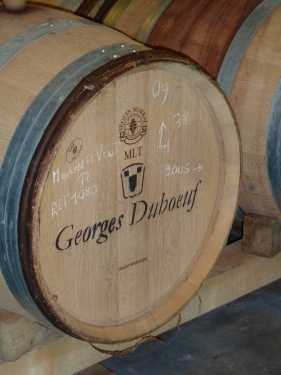
– Observations
Up until our home-cooked meals in Quincie-en-Beaujolais, we were convinced that all French liked their food very salty
Many French people chew with their mouth open when eating and smack away while talking with their mouth full !
